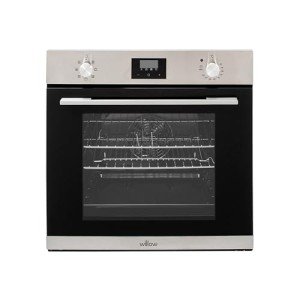The Comprehensive Guide to Built-In Ovens: A Modern Kitchen Essential
Built-in ovens have actually ended up being a staple in contemporary cooking areas, integrating aesthetics, functionality, and space performance into a single home appliance. As built in oven and ceramic hob packages strive for both functionality and design, understanding the functions, benefits, and considerations of built-in ovens can significantly boost the cooking experience. This short article looks into what built-in ovens are, their varied types, installation considerations, and FAQs to help consumers make notified decisions.
What is a Built-In Oven?
A built-in oven is a kitchen appliance designed to be integrated into cabinetry, developing a streamlined, cohesive search for the kitchen. Unlike freestanding ovens, which occupy extra floor space, built-in ovens are enclosed within wall systems or cabinetry. They are readily available in different setups and sizes, permitting personalized solutions that accommodate the needs of varied households.
Kinds Of Built-In Ovens
Built-in ovens can be classified into various types based upon their functions and cooking approaches. Here are some of the most common types:
Single Built-In Ovens
- Best for small kitchens and homes with modest cooking needs.
- Usually have one main cooking compartment, developing a compact footprint.
Double Built-In Ovens
- Suitable for avid cooks and bigger households.
- Functions 2 different cooking compartments for flexible meal preparation.
Wall Ovens
- Set up at eye level for easy access.
- These ovens often include convection innovation for even cooking outcomes.
Steam Ovens
- Usage steam to cook food, maintaining wetness and nutrients.
- Great for health-conscious individuals.
Combination Ovens
- Merge microwave and standard oven functionalities.
- Offer flexibility for fast meals and traditional baking.
Italian or European Style Ovens
- Typically developed with special aesthetics and advanced cooking technologies.
- Popular for high-end kitchen designs.
Advantages of Built-In Ovens
Built-in ovens use a range of advantages that interest modern homeowners seeking both performance and visual appeals. Some of these benefits include:
- Space Efficiency: Built-in ovens save valuable counter space, which is especially helpful in smaller sized cooking areas.
- Enhanced Aesthetics: With a custom-made appearance, built-in ovens enhance the total design of the kitchen while supplying a seamless combination with cabinetry.
- Versatile Cooking Capacity: Available in numerous sizes, these ovens cater to the cooking needs of various homes, from single occupants to large households.
- Accessibility: The setup at eye level makes built-in ovens easier to access, reducing the risk of spills or injuries when putting or eliminating hot dishes.
- Lower Energy Consumption: Many built-in ovens featured energy-efficient modes that help in reducing electric usage with time.
Setup Considerations
Setting up a built-in oven requires cautious preparation and consideration. Here are some aspects to keep in mind:
- Dimensions: Before buying a built-in oven, determine the area readily available to guarantee a proper fit. Built-in ovens come in specific standard sizes, so it is crucial to select the best one.
- Ventilation: Adequate ventilation is needed for efficient operation. Guarantee there is an appropriate exhaust system that abides by regional structure codes to prevent overheating.
- Electrical Requirements: Built-in ovens may require specific electrical outlets or wiring. Talk to a certified electrical contractor to make sure that the installation complies with security requirements.
- Professional Installation: Although some house owners opt for DIY setup, hiring a specialist can help ensure safety and right setup for ideal performance.
Maintenance Tips for Built-In Ovens
Keeping your built-in oven not only extends its lifespan but also makes sure efficient operation. Here are some essential maintenance tips:
Regular Cleaning:
- Wipe down interior surface areas after each usage to avoid buildup.
- Usage vinegar and baking soda for non-toxic cleaning.
Check Seals:
- Inspect the door seals to avoid heat loss.
- Change worn-out seals without delay.
Test Thermostat:
- Periodically inspect the temperature level precision with an oven thermometer. Adjust settings as essential.
Service Annually:
- Schedule expert maintenance once a year to inspect electrical parts and ensure safe operation.
| Maintenance Task | Frequency | Function |
|---|---|---|
| Clean interior | After each use | Prevent accumulation and smells |
| Examine seals | Month-to-month | Make sure no heat gets away |
| Test thermostat | Every 6 months | Check temperature accuracy |
| Expert service | Every year | Guarantee optimal performance |
Frequently Asked Questions About Built-In Ovens
1. Do built-in ovens come in different sizes?Yes, built-in ovens are readily available in different sizes to fit different kitchen configurations and cooking requirements. It is necessary to measure the offered space before purchasing. 2. Can built-in ovens be utilized as regular ovens?Absolutely. Built-in ovens operate like routine ovens,
enabling you to bake, broil, and cook a range of meals. 3. Are built-in ovens energy-efficient? Numerous built-in ovens included energy-saving features and are designed to use less
electrical energy than freestanding models. 4. The length of time does installation take?Installation time can vary based on intricacy however usually ranges from 1 to 3 hours. It is recommended to work with a professional for optimal results. 5. What is the life-span of a built-in oven?With appropriate maintenance, built-in ovens can last anywhere from 10 to 15 years or longer.
Built-in ovens offer a plethora of benefits for modern families, combining benefit, energy performance, and trendy design into one service.
When selecting and installing a built-in oven, it's important to think about the type that best fits your cooking routines, readily available space, and visual choices. By understanding the advantages, installation requirements, and maintenance needed, homeowners can elevate their cooking experience and develop spectacular kitchen areas that impress both household and guests alike. Investing in a built-in oven can be an advantageous addition that simplifies cooking, boosts home worth, and savors culinary delights for several years to come.

